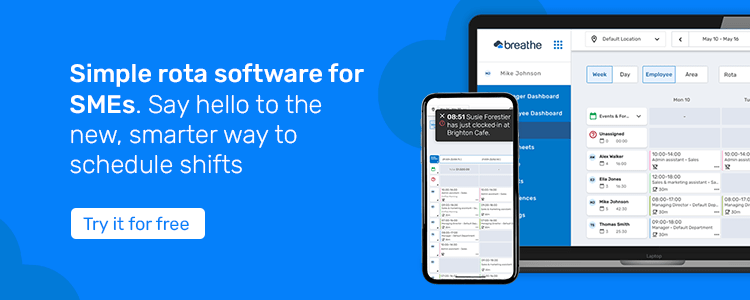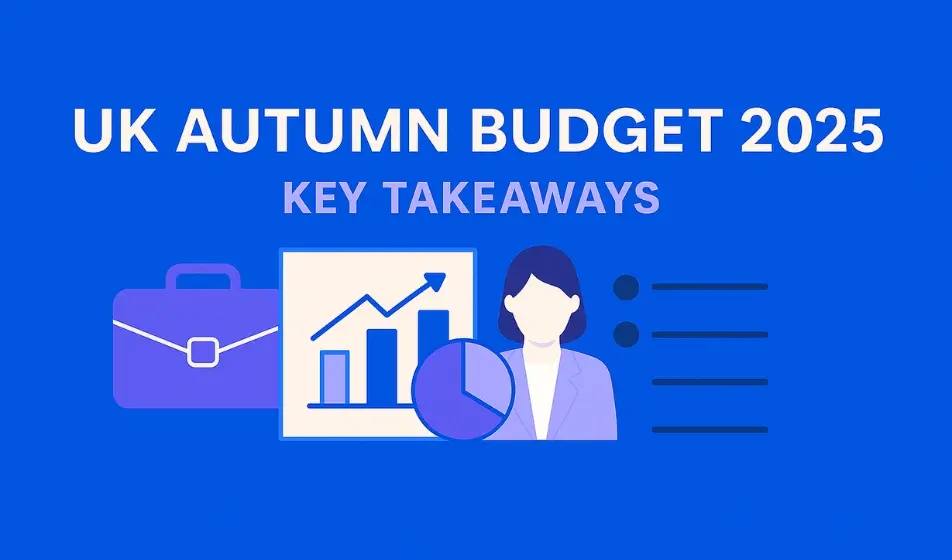What is predictive scheduling and is it applicable in the UK?
To help protect employees, and implement a fairer rota system, organisations have started to implement a new way of scheduling their rotas: predictive scheduling.
This new way of scheduling not only helps create a positive working environment for employees — it can also boost staff retention and improve efficiency by encouraging a healthy work-life balance.
What is predictive scheduling?
What are the predictive scheduling laws?
Do predictive scheduling laws apply to the UK?
How to adjust your rota to work for predictive scheduling
A simple solution for predictive scheduling
What is predictive scheduling?
If your staff can't predict or plan their day to day lives properly, they’re going to lose enthusiasm for their role and start looking elsewhere for work.
Predictive scheduling aims to give staff more security and control over their time by distributing rotas at least two weeks ahead of time. In theory, this stops shifts from being posted without advance notice. It also protects employees from last minute call-ins and rota changes. This means predictive scheduling can help staff see more of their family and friends because they can plan around shifts with more confidence.
By changing the way you schedule, you can help your business by giving staff more stability in their role, which in turn will improve the overall morale of your team.
What are the predictive scheduling laws?
The laws that apply to predictive scheduling ensure that employees post rotas to their employees a certain amount of days or weeks in advance. It also forces organisations to observe rest periods between rotations to reduce overworking and staff burnout.
Predictive scheduling laws also aim to discourage employers from changing schedules by enacting penalties—such as extra pay and the right to refuse—for staff who are asked to come in when they aren't scheduled to work.
Although they vary depending on the region, predictive scheduling laws tend to include the following:
Notice
Staff must be notified of upcoming shifts and any changes in plenty of time. This is usually around the two week mark.
Penalties
Penalties for rota changes after the required notice period, such employees receiving extra pay to encourage employers to keep their schedules organised and fair.
The extra pay depends on the area, how much notice was given and the extent of the scheduling change.
'Clopenings'
Clopenings occur when a staff member closes a hospitality or retail outlet late at night, then has to open the store early the following morning. This back-to-back shift style can be extremely draining for employees, who will have little time to rest between demanding shifts.
In New York City, scheduling laws ban employees from closing fast-food stores and reopening them the next day unless there has been at least an 11-hour gap between shifts.
Records and visibility
To ensure any cases of law breaches are found, businesses are asked to maintain and store scheduled data for multiple years. Rotas must also be displayed in an area that’s easily accessible to all employees.
If you are thinking of implementing predictive scheduling in your workplace, use a cloud-based rota software, such as Breathe Rota, to make it easier. Our rota software allows you to create an easily accessible schedule well in advance and keep a permanent record of past rotas without the need for additional storage space.
Do predictive scheduling laws apply to the UK?
Currently predictive scheduling laws do not apply in the UK. However, the benefits of implementing predictive scheduling mean it is still worth considering for your workplace.
In the UK, an employer can change shifts with as little as 12 hours in advance. This seems far from fair to the employee—especially those on zero-hour contracts, or if the rota is not easily accessible, simple to share or confusing to use.
How to adjust your rota to work for predictive scheduling
With a few simple changes you can adjust your rota to make it fairer for staff, and ready for predictive scheduling.
1. Prepare your rota in advance
Create your rota weeks in advance and make it accessible to employees with at least two weeks’ notice.
2. Make your rota accessible
Make sure all staff can access the new rota by keeping it in an area where all staff can see. This can be the staff room or online in a shared spreadsheet.
Alternatively, by using Breathe’s cloud-based rota software, your staff can access the rota from home or on their mobile device.
3. Set scheduled hours
Upon hiring a new staff member discuss what hours you wish them to work and stick to it. You should also meet with our current staff and discuss how many hours you want them to work.
4. Discuss overtime pay
Talk with your staff about setting up overtime pay as a penalty when you as an employer ask employees to work overtime or cover shifts that are outside their agreed scheduled hours.
A simple solution for predictive scheduling
Breathe’s Rota software makes planning shifts in advance a breeze. Try our platform for free today and try predictive scheduling for yourself. It could make all the difference to your employees’ wellbeing, while saving you valuable time.

Author: Aimée Brougham-Chandler
An IDM-certified Digital Copywriter (2023) & English Language & Literature graduate (BA Hons), Aimée is Breathe's Content Assistant. With 3 years' content marketing experience, Aimée has a passion for writing - and providing SME HR teams with solutions to their problems. She enjoys delving into & demystifying all things HR: from employee performance to health and wellbeing, leave to company culture & much more.




